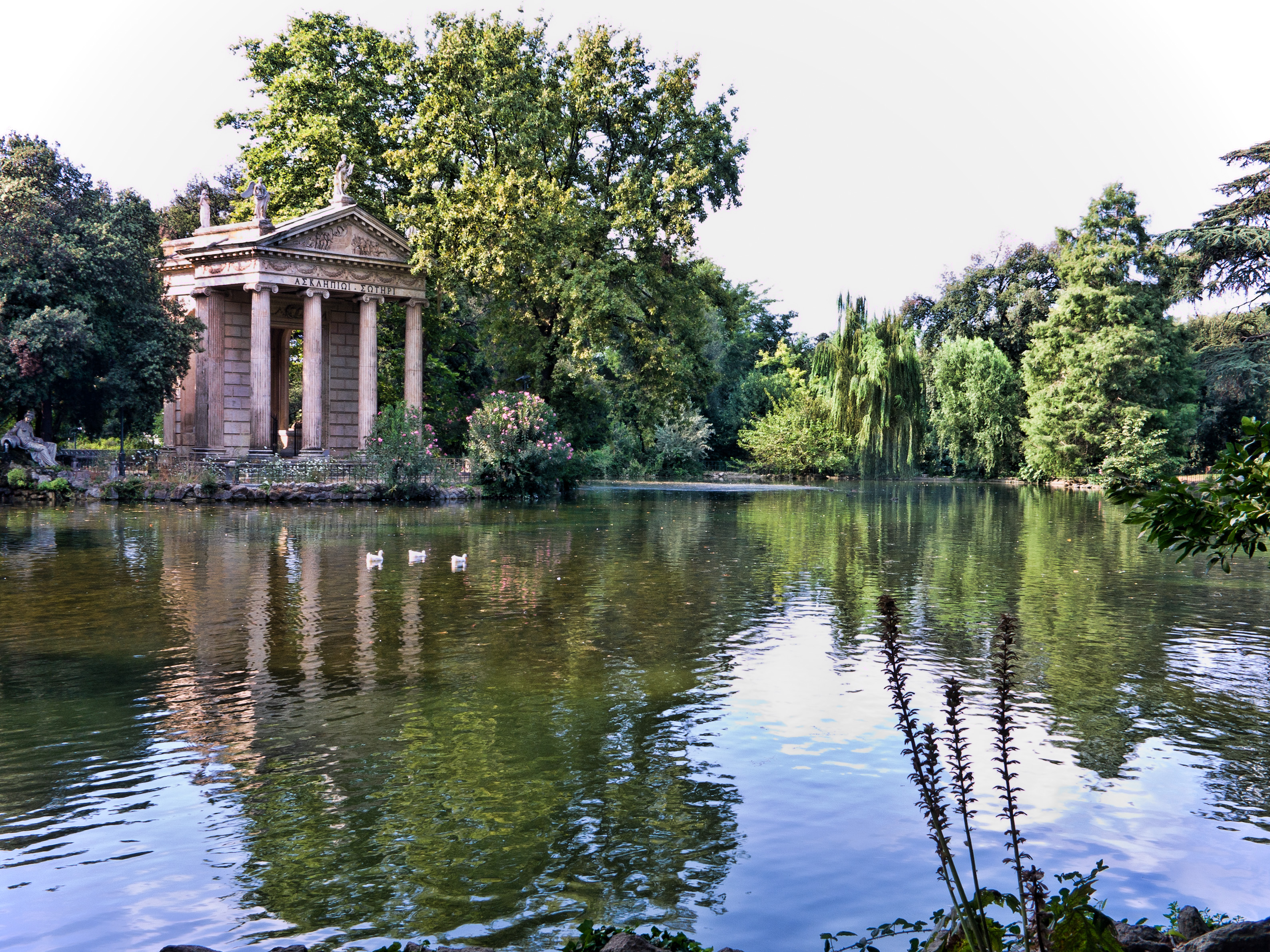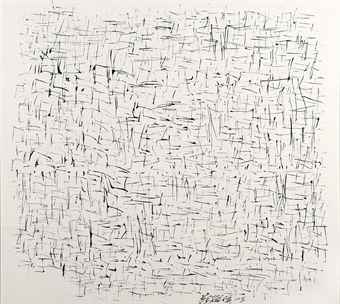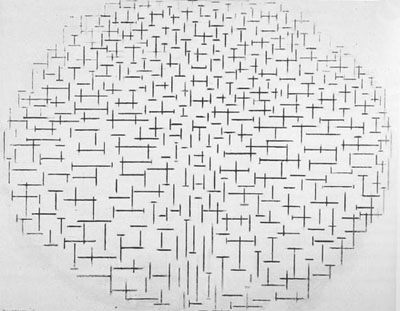Hello, Bill here!
Some of you may be wondering how I ended up becoming an artist. Truth be told, I am still quite amazed at how life had unfolded for me. My journey was not a smooth one.
My first encounter with art was when I was 12. Quite a late age don't you think? I became an apprentice at this firm called Gidding and Sons in the heart of Rotterdam. They're a bunch of talented artist and craftsmen who specialized in design and decoration. Despite the amount of talent concentrated there, somehow I managed to grab the attention of the owner but for the life of me, I can't remember his name anymore. That's a shame since I am forever indebted to him - he's the one who convinced me to really join the Rotterdam Academy of Fine Arts and Techniques. Thank you kind sir.
So the next chapter in my art journey began. I was studying in the academy and I considered myself very lucky: I've learnt about commercial design from the time I worked as an apprentice and now I got to learn about the more refined principles of high art. Below are a few paintings I did as a student. Ah, the memories...
 |
Still Life (1916/17) by Willem de Kooning
34.3 x 38.1 cm
Oil on Cardboard
The painting I did when I was 13 years old |
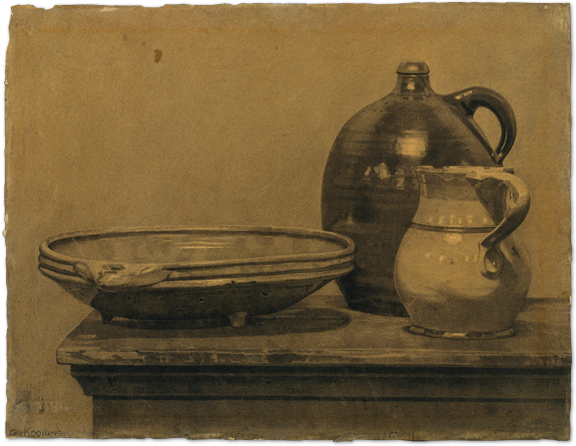 |
Still Life (Bowl, Pitcher, aand Jug) (1921) by WIllem de Kooning
Did this 4 years later. Still very proud of it! |
And...as you all know, I hid in a British freighter ship to go to America in 1926. It's not really because I thought America was the place for artists though, mind you. In fact, quite the opposite, I never even once considered America as having any serious artist at all. I just wanted to go to the US because it sounded cool. (I was young, okay?)
As it turned out I'm quite mistaken. There were indeed serious artists but almost all of them were poor. But that's what fascinates me; their devotion to the arts. There's one more thing that finally convinced me to become an artist though. I've told you that I met a lot of artists, but then I met Gorky. Arshile Gorky, to be precise:
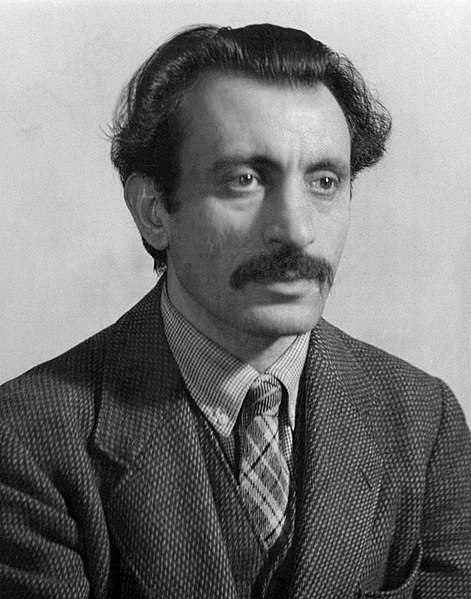 |
| "If you were serious, you studied the work of modernist masters such as Picasso, Matisse and Miró, and you aspired to equal or better their achievement," he said last time. Whoa. |
|
|
|
|
|
|
And that was how I finally became a full-time artist.
However, his modernist ideas, which I really admired, clashed with my classical training, which I also quite like so that was a horribly rough period for me. You can ask my friends (or perhaps the garbage man) how many canvasses I threw out last time.
Then, along comes Elaine:
 |
Portrait of Elaine (1940) by Willem de Kooning
"I was a lot of fun," Elaine said in an interview quite recently. "I mean a lot of fun."
And yeah, I can't agree more. |
I guess the two of them had a significant impact on my works. Gorky planted the idea of departing from classic art convention, and Elaine was the one who finally gave me the courage to do so:
 |
| Seated figure (male classical) (1939) by Willem de Kooning |
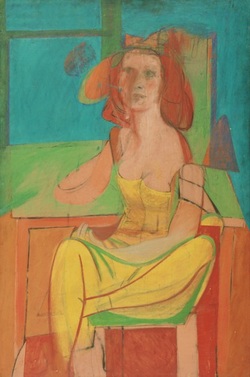 |
| Seated Woman (1940) by Willem de Kooning |
 |
| Standing Man (1942) by Willem de Kooning |
 |
| Queen of Hearts (1943) by Willem de Kooning |
Somehow I managed to delve into the realm of abstraction yet still pay homage to the old masters by keeping a clear reference to the human figure in my paintings of these period.
 |
Portrait of Master Bill (1929 - 1936) by Arshile Gorky
You see how Gorky influenced me? |
But then, things went down the drain. I was broke, World War II happened, The Holocaust happened and Rotterdam, my city of birth, was reduced to rubble. At that very frustrating time period, I, together with my friend Franz Kline, went to buy black and white enamel household paint (read: too poor to buy anything else) and just vent. Like really, we just went cuckoo.
 |
Dark Pond (1948) by Willem de Kooning
Enamel on composition board |
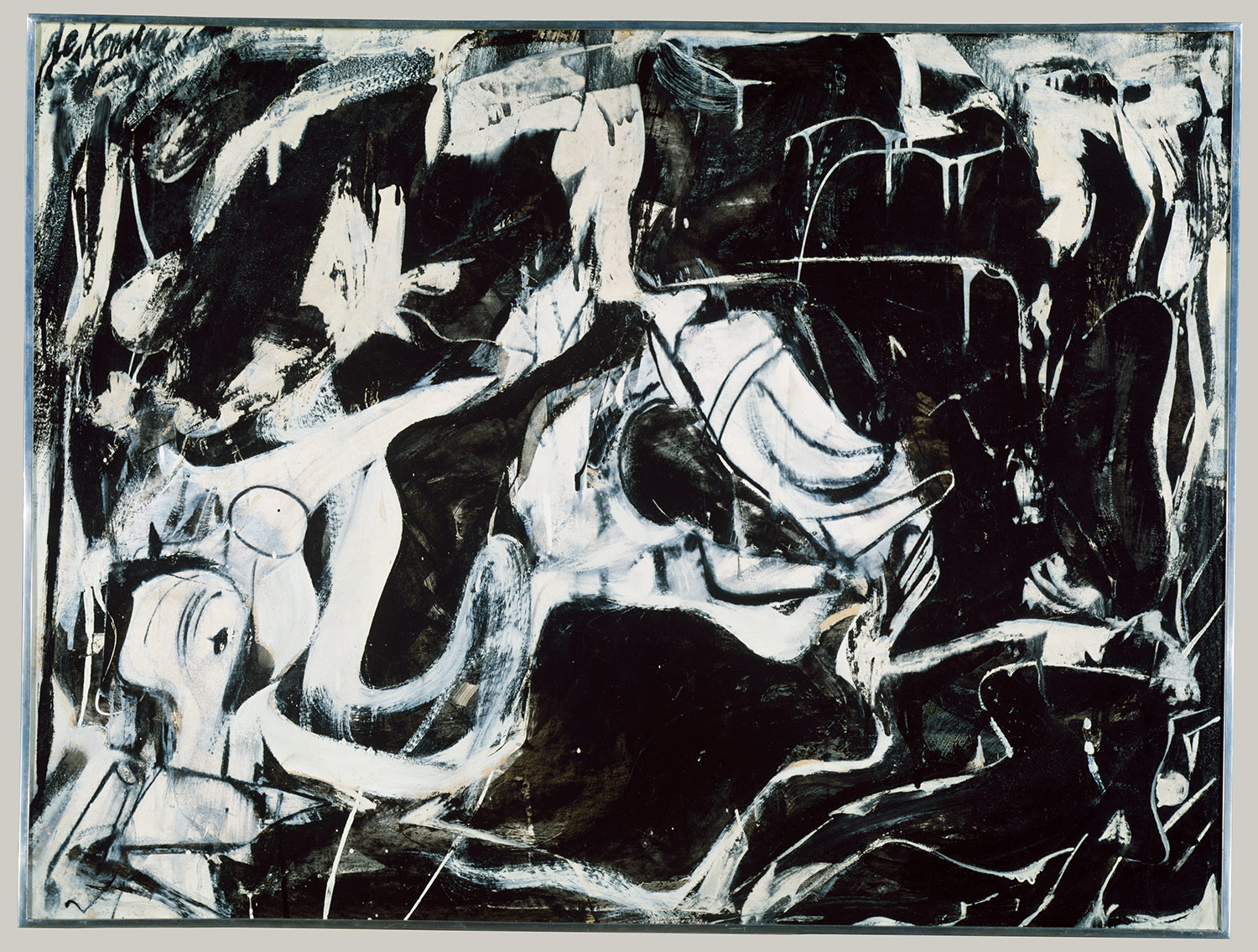 |
Black Untitled (1948) by Willem de Kooning
Oil and enamel on paper |
 |
Untitled (1948) by Willem de Kooning
Oil and enamel on paper |
But I think something good did come out of it in the end...I had my very first solo exhibition that year at the Charles Egan gallery. Not a big one, and only a few paintings were sold but at least it got people talking about me.
I decided to explore this style further and was a bit pleasantly surprised that people compared me to Jackson Pollock:
 |
| Attic (1949) by Willem de Kooning |
 |
| Excavation (1950) by Willem de Kooning |
But I still feel that my works still bear more 'resemblance' to the real world than Pollock's work and that is not necessarily a good or a bad thing. I respect Pollock. Every so often, a painter has to destroy painting. Cezanne did it, Picasso did it with Cubism. Then Pollock did it. He busted our idea of a picture all to hell. Then there could be new paintings again.
But for me, even abstract shapes must have a likeness. I just feel that I'm more suited to draw human figures and so, to the surprise of a lot of people, I ditched black and white paintings and focused back on human figures. Or maybe to be precise, I should say, women:
 |
| Woman I (1952) by Willem de Kooning |
 |
| Woman II (1952) by Willem de Kooning |
 |
| Woman III (1953) by Willem de Kooning |
And that I guess somewhat summarizes my journey of being an artist. Even though the Women series may seem to be my most popular series, I did not stop there. I continued experimenting in many, many different styles. With my dementia nowadays, it would be difficult for me to tell you why I painted certain paintings that way. All I can say is that after the Women series I paint with bolder and less messy lines. Sometimes completely random things inspired me too such as...
Highways:
 |
| Montauk Highway (1958) by Willem de Kooning |
A Mediterranean Garden:
 |
| Villa Borghese (1960) by Willem de Kooning |
Or landscapes:
 |
| Untitled (Landscape) (1977) by Willem de Kooning |
And now, as old age and diseases are starting to affect me, my painting style once again changes. Much much cleaner if you compare them to my earlier works:
 |
| Untitled XII (1985) by Willem de Kooning |
 |
| Untitled (1988) by Willem de Kooning |
My journey never stops. I always evolve from time to time.
That is all for now, everyone! Bless your heart and see you next time!
sources:
http://www.smithsonianmag.com/arts-culture/willem-de-kooning-still-dazzles-74063391/?page=1
http://arthistory.about.com/od/artistsaz/a/Artists-Quotes-Willem-De-Kooning.htm



